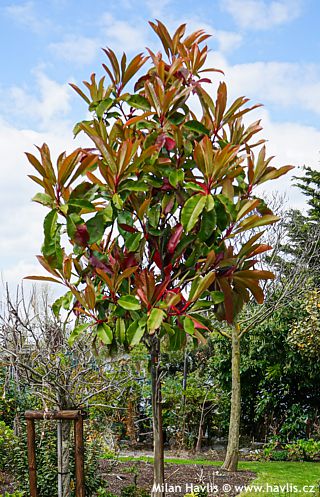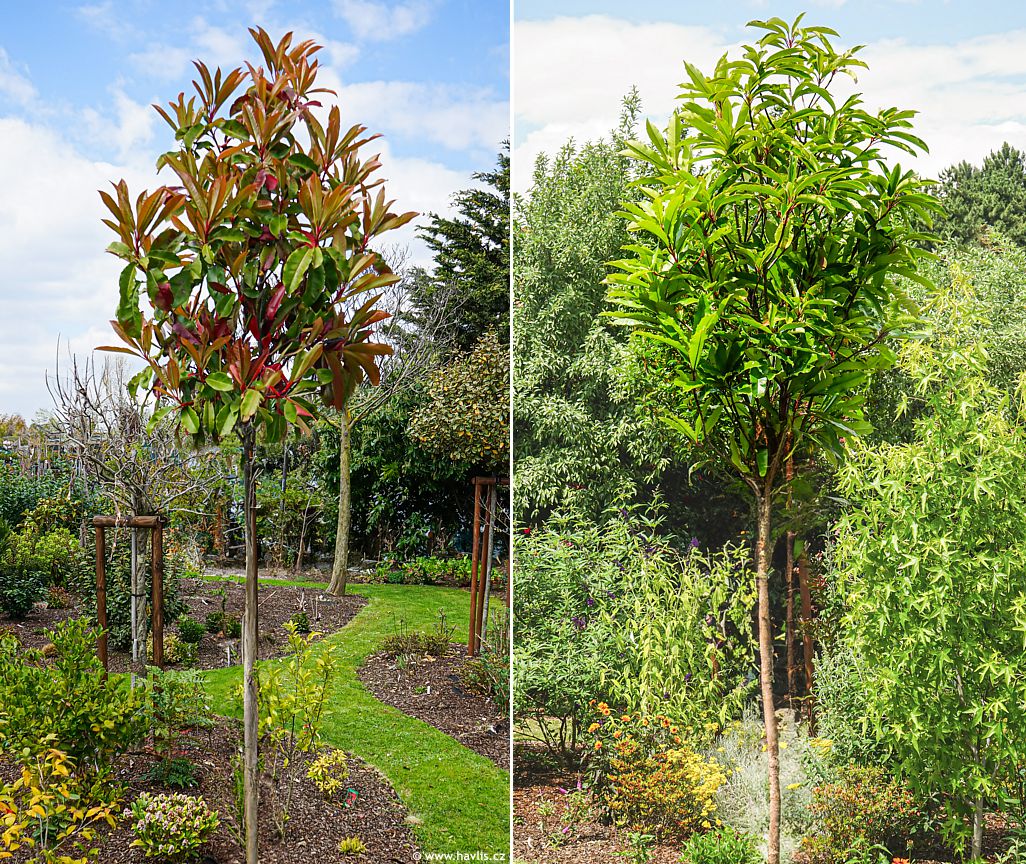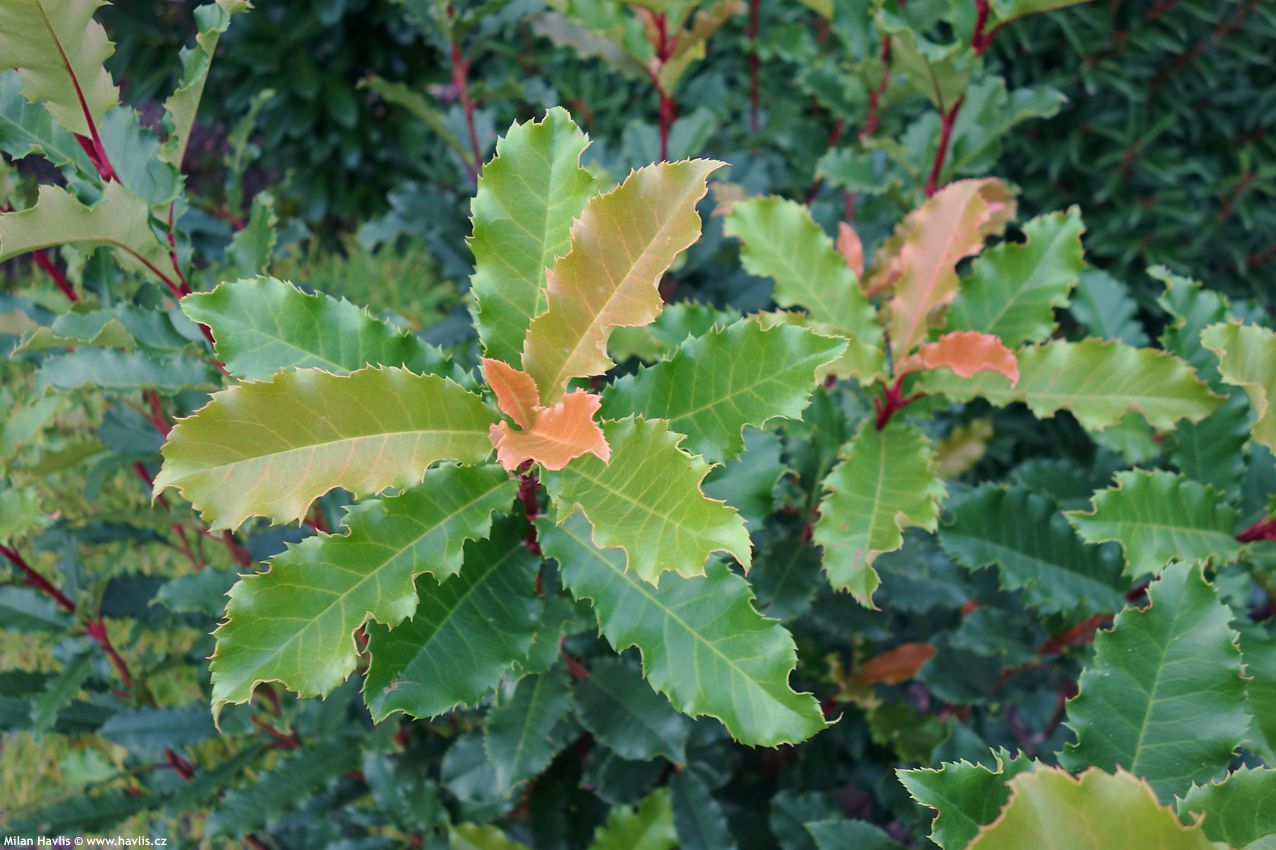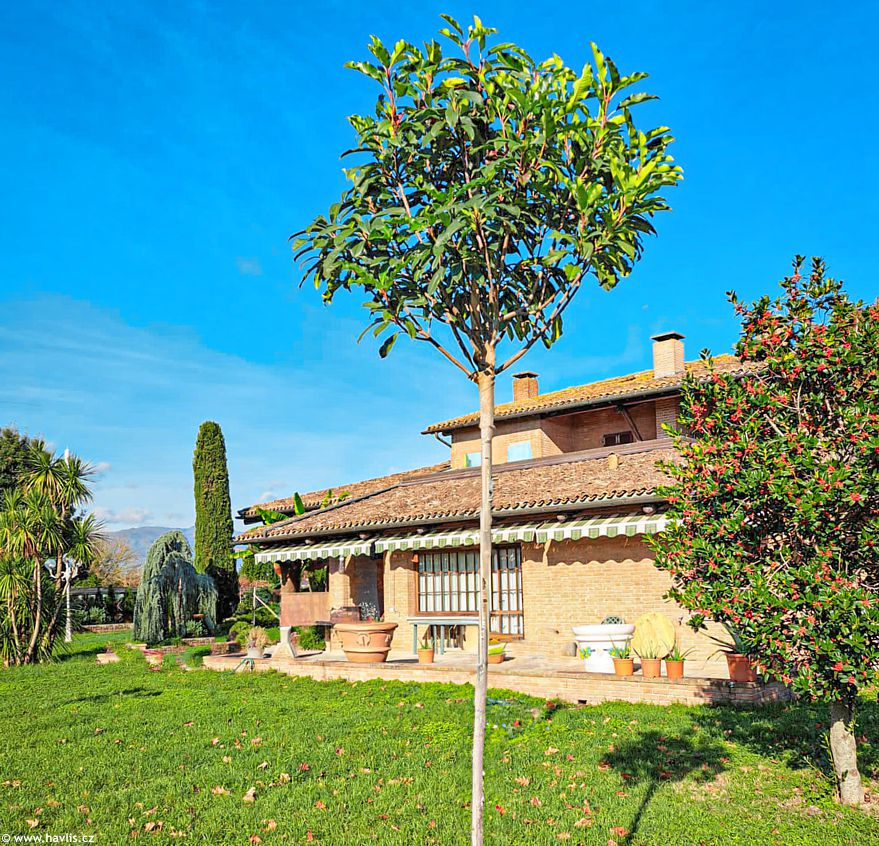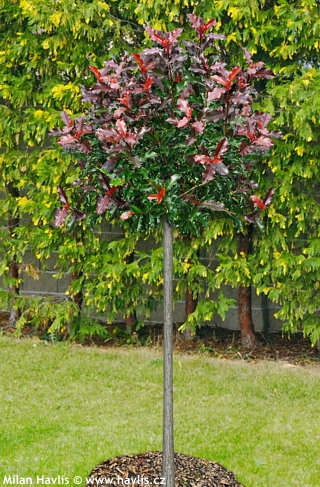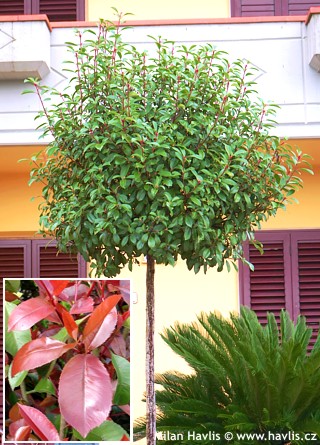Photinia serratifolia 'REV100' CRUNCHY® Chinese photinia - standard tree
Photinia
Chinese photinia is a species which is less common in trade and almost nonexistent in European nurseries. Reason being that all European encyclopedias rate it much less winter hardy than David’s or Fraser’s photinia which are very popular evergreen shrubs used for hedges in zones 6 and higher all over temperate regions. However, in the USA this species has been successfully cultivated for a few decades now and has proved reliably hardy down to zone 6, which allows using it in similar areas as the other well-known hybrids and species. Currently, there are new varieties being bred in Europe with attractive foliage and slower growth (hence smaller habit) making them hardier than fast growing shrubs with tender wood.
CRUNCHY® is a French introduction of Chinese photinia invented by Jean-Pierre Faure. When I first saw it I was amazed at its similarity to Coppertone loquat, especially as a standard tree. Loquat is a Mediterranean, tender tree which is not hardy here at all so CRUNCHY® photinia will make a great alternative with a somewhat exotic appearance.
Its evergreen leaves are large – 15-20 cm long, oval, leathery, glossy, and heavily undulated and toothed at margins. They emerge rich chocolate brown to maroon in mid spring, maturing to rich green in early summer. New leaves are produced once or even twice again until autumn, this time with only pale bronze red colour, and the same shade will dress up the whole plant in various depths for winter until the arrival of the first warm days of spring. Then some of them will fall off and the rest will turn green again while new foliage comes out. In mid spring older plants produce medium-sized panicles of creamy white flowers.
Standard tree forms of evergreen woody plants are becoming more and more popular. They can offer good screening at a desirable height blocking views from neighbouring windows if privacy is why you look for an evergreen tree. CRUNCHY® photinia grows at a slower growth rate as opposed to Fraser’s photinia, making strong and thicker branches. It has a well-behaved, upright habit and becomes rather slender unlike for instance Red Robin or Camilvy photinias which grow vigorously to all sides. If you need to prune it, do so in spring after all frosts or during July. Every pruning brings a new flush of red leaves.
As every standard tree it needs a good support to protect the stem from moving, especially in wind. It can be removed after 3 years if the tree is established well. There is usually a bamboo stick attached to the tree trunk when you buy the plant. It needs to be removed before you tie the stem into your new support.
Chinese photina will be happier in a location sheltered from strong, drying winds in winter here in zone 6. All photinias like moist but well-drained, humus-rich soil. Acid soil will enhance foliage colour but is not a must. Mulching helps retain moisture and protects the plants from hard frost and temperature swings, especially in late winter. They like watering when transplanted and perhaps during extra hot and dry summers, otherwise they are reasonably drought-tolerant when established. In our climate provide extra watering also in frost-free periods of winter if the ground is not frozen. Hardy to about -25 °C.
Last update 10-07-2023

































